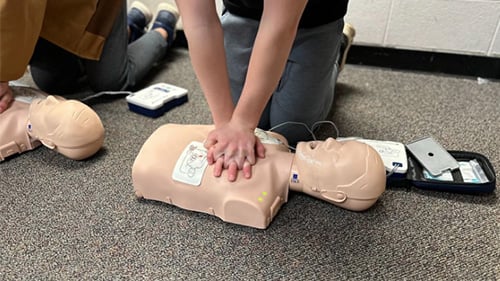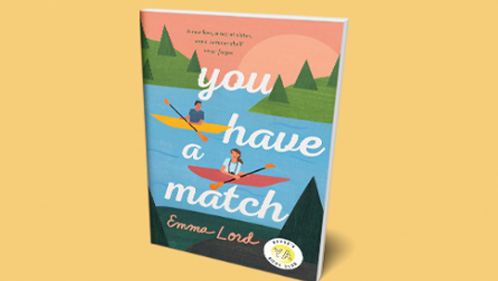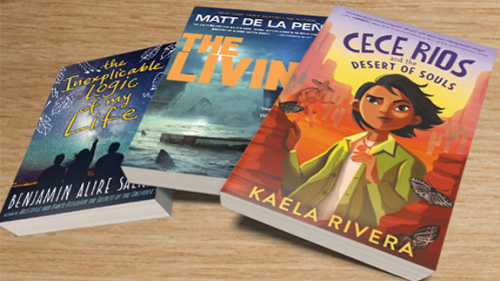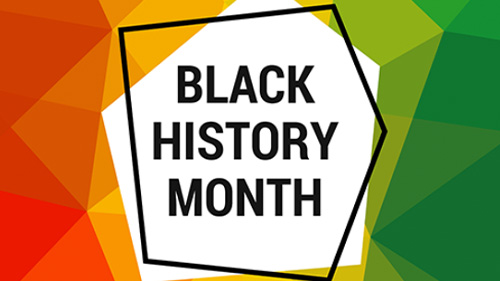Rhetoric Meets Remedy: Teaching for Transfer
As a public educator, one of the most vital things that I try to get my students to understand is how all the information they learn works together...
AP & Honors Mathematics
Explore Wiley titles to support both AP and Honors mathematics instruction.
Literacy Skills & Intensive Reading
Connections: Reading – Grades 6–12
Empower student success with a proven intensive reading program that develops strong reading skills in striving readers.
Drama, Speech & Debate
Basic Drama Projects 10th Edition
Build students’ confidence and competence with comprehensive, project-based theatre instruction.
Literature
Connections: Literature
Support learners as they study dynamic, relevant texts and bring the richness of diverse voices to students through literature.
Literature & Thought
Develop critical thinking, reading, and writing across literacy themes, genres, historical eras, and current events.
Language Arts
Vocabu-Lit® – Grades 6–12
Help students build word power using high-quality contemporary and classic literature, nonfiction, essays, and more.
Connections: Writing & Language
Help students develop grammar, usage, mechanics, vocabulary, spelling, and writing and editing skills.
Reading/English Language Arts
Measuring Up to the English Language Arts Standards
Incorporate standards-driven teaching strategies to complement your ELA curriculum.
English Language Learners
Measuring Up for English Language Learners
Incorporate research-based best practices for ELLs with an approach that includes a focus on language acquisition strategies.
Mathematics
Measuring Up to the Mathematics Standards
Incorporate standards-driven teaching strategies to complement your mathematics curriculum.
Foundations
Measuring Up Foundations
Help students master foundational math skills that are critical for students to find academic success.
Science
Measuring Up to the Next Generation Science Standards
Give students comprehensive NGSS coverage while targeting instruction and providing rigorous standards practice.
Assessment
Measuring Up Live
Deliver innovative assessment and practice technology designed to offer data-driven instructional support.
For a better website experience, please confirm you are in:
4 min read
Angela Hardin Oct 29, 2025 2:19:01 PM

In the first blog post of the Rhetoric Meets Remedy series, I discussed the importance of teaching for transfer. Teaching for transfer is vital because it allows students to move beyond the memorization of facts and to take ownership of their learning, understanding how to problem-solve in authentic, meaningful ways. At its best, transfer-focused teaching cultivates lifelong learners - students who don’t just complete the tasks, but understand why the tasks matter.

In this second blog post, I will share a bit about my collaborative journey on how I implement teaching for transfer in my 9th Grade English course, where students reflect on their learning through the production of audio and video projects like podcasts, PSAs, and video tutorials.
In my 9th Grade English course, the heartbeat of the curriculum is media and information literacy. It’s more than just reading and writing. I guide students on ways to become thoughtful communicators and critical consumers of information and media. The focus is to help students understand how persuasive communication functions across different forms of media, from advertisements and news articles to social platforms and visual storytelling. Through activities like analyzing advertisements, decoding rhetorical strategies, and identifying biases, students learn to navigate today’s complex media landscape. Every freshman at our school takes this course to fulfill their freshman English credit requirements, making it a foundational part of their high school journey.
In addition to this course, freshmen are also required to take a Health/PE course where they learn about positive mental and physical health and wellness practices, topics that naturally invite critical thinking, self-reflection, and media engagement. The Health/PE instructor, Dr. Melanie Smith, and I recognized a golden opportunity to bring our curricula together. We started with the overarching essential question: What if students could use their media literacy skills to amplify the health and wellness knowledge they were building?
And that’s exactly what the students did.

Students selected topics they were exploring in health class—things like mental health awareness, healthy dietary habits, stress management - and brought them into our English classroom. From there, they took a deeper dive into research, learning how to evaluate credible sources, identify and manage biases, and adhere to ethical research practices. I provided guidance on navigating reliable databases, cross-referencing information, and synthesizing it all into coherent narratives.
Taking it a step further, students didn’t just write essays or research papers. They used their solid research and new understanding of rhetorical awareness to design media products like podcasts, public service announcements (PSAs), and video tutorials to convey their information. The result was that students became savvy researchers, but also impactful creators. By blending English and Health instruction, Dr. Smith and I empowered students to engage deeply with the world around them. In doing so, the students learn to become more informed, expressive, and thoughtful digital media citizens.
If you would like to learn more about how to create similar media products in your classroom, here is a brief overview that you may find helpful. Each of these can take between two to four weeks to complete, with the average being about three weeks. The research prep took my students the longest because I wanted to ensure that students were able to fully comprehend the rhetorical choices they made when writing scripts and designing products. Note that the topics covered pertained specifically to the collaborative work Dr. Smith and I completed. You can expand the ideas and incorporate anything from all content areas.
|
PRODUCT |
FREE SOFTWARE |
SOME TOPICS COVERED |
HELPFUL TIPS |
|
Podcast - a digital audio recording that often blends storytelling, interviews, commentary, and news about specific topics Perfect for:
|
Google Docs/Microsoft Word - for writing scripts Audacity - great editing software for beginners and was preferred most by my students GarageBand - a few groups preferred to edit here because they were already familiar with the program. This is compatible with MAC/iOS users. Canva - Have students design their own logo on a thumbnail for the podcast. |
|
|
|
Public service announcements (PSAs) - a short, impactful video message intended to inform or persuade the public about an important topic Perfect for:
|
Google Docs/Microsoft Word - for writing scripts Smart Phones - for shooting videos Capcut - a free editing software that many students are already familiar with because of TikTok Canva Video Editor - Free program where students can upload own video and add in graphics if needed Clips - a free, easy-to-use video editing software for Apple users |
|
|
|
Video tutorial - a short, instructional video that visually walks viewers through a specific skill, process, or demonstration Perfect for:
|
Google Docs/Microsoft Word - for writing scripts Smart Phones - for shooting videos OBS Studio - free program that allows HD screen recording and streaming Capcut - a free editing software that many students are already familiar with because of TikTok |
How to perform:
|
|
It’s not about covering the content; it’s about cultivating thinkers that can bridge the old and the new.
Good reads:

As a public educator, one of the most vital things that I try to get my students to understand is how all the information they learn works together...

Over the course of my career as a middle school ELA teacher, I’ve graded more writing pieces than I can count. I’ve graded late into the night, on...

Given that lately I am as burnt out as they come, I found myself wanting to do something unusual.

Back in my hometown, it was a rite of passage at the age of twelve to get a paper route. There was no status associated with it, nor did it come with...

Every time I open up Instagram, Facebook, or Twitter, I’m given the option to post to stories or urged to open the stories of others. Pictures that...

In recent months I learned, along with others around the world, of the horrific stories of the mass unmarked grave sites of Indigenous, or...

Back in the days before television screens were flat, before we had televisions in every room of the house, before crazy high screen resolutions let...

In my first period class of sophomores at a high school on the Southwest side of San Antonio, I had one White student, one Muslim student, and the...

Annotation is a life skill, especially for our college-bound students. Reading something with a purpose, a strategy to comprehend at a higher level,...

During Pride Month, everyone expects coming out stories or rainbow flags to take over their social media profile pics–and honestly, I love those...

On December 20, four days after his semester finished, my youngest son flew home for Christmas break. On December 29, he flew back—19 days before his...

I don’t know about you, but I hate grading reading comprehension questions. First of all, the answers usually could be “borrowed” from websites like...
